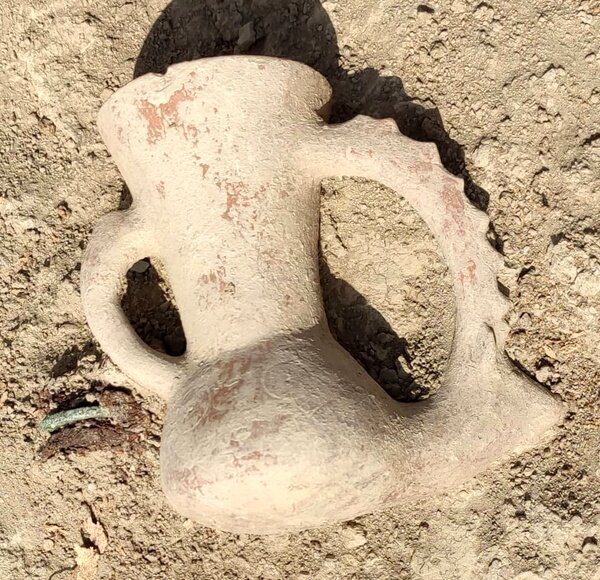Parthian rhyton, jewelry unearthed in Semnan

TEHRAN – Archaeologists have unearthed a clay rhyton and some pieces of jewelry while surveying tomb chambers of an ancient cemetery in Semnan province, north-central Iran.
The rhyton, which bears the depiction of a wild goat, is estimated to date from the Parthian era (247 BC – 224 CE), ILNA reported.
Moreover, in a tomb belonging to a lady, a bronze ring depicting a sphinx was discovered next to other luxurious objects such as bracelets, bracelets, bracelets, various types of pottery, etc., which is unique, the report said.
Up to the moment, a team of archaeologists has explored five tomb chambers and three newly carved trenches each measuring ten by ten meters.
The Parthian Empire, also known as the Arsacid Empire, was a major Iranian political and cultural power in ancient Iran. The Parthians largely adopted the art, architecture, religious beliefs, and royal insignia of their culturally heterogeneous empire, which encompassed Persian, Hellenistic, and regional cultures. At its height, the Parthian Empire stretched from the northern reaches of the Euphrates, in what is now central-eastern Turkey, to eastern Iran.
Parthian wealth obtained through lucrative trade networks resulted in substantial patronage of the arts, in particular, relief sculpture, statuary (large and small scale), architectural sculpture, metalwork, jewelry, and ceramics; coins with images of Parthian rulers form another important category of objects.
A rhyton is a roughly conical container from which fluids were intended to be drunk or to be poured in some ceremony such as libation, or merely at table. They are typically formed in the shape of an animal’s head, and were produced over large areas of ancient Eurasia, especially from Persia to the Balkans.
AFM

Leave a Comment